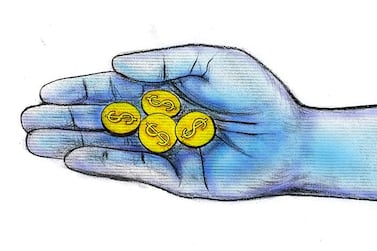Reading about the evolution of corporate bond trading feels a bit like stepping into Walt Disney’s Carousel of Progress.
One of the slower attractions at the Magic Kingdom Park in Florida, riders follow its animatronic characters through the decades as they marvel at innovations like the hand-cranked washing machine and electric iron.
Similarly, corporate bond traders have been slow to adapt to changes in financial markets. Wall Street banks have long stood between investors looking to buy and sell company debt, even as many other asset classes shifted to cheaper computerised trading. This lack of evolution, and reliance on dealers, has naturally raised concerns about liquidity in the case of a severe credit crunch.
Well, those traders are gradually realising that “there’s a great big beautiful tomorrow.” Bloomberg News’ Matthew Leising has the details:
Electronic marketplaces like MarketAxess, Tradeweb Markets and Liquidnet say that more of the company bond trades that happen on their platforms are between investors directly, without banks necessarily being involved.
For MarketAxess, 27 per cent of corporate bond trades were on its all-to-all platform Open Trading in the fourth quarter, up from 3 per cent at the start of 2014, the company said. On Liquidnet’s all-to-all platform, more than 90 per cent of volume is between investors. Electronic trading is still a relatively small part of a market dominated by dealers, but its share of trading is growing.
“It is the model of tomorrow for fixed-income trading,” said Rich Repetto, an equity analyst at Sandler O’Neill & Partners.
This is progress, even if it feels as if the tipping point looks to be at hand year after year. Regardless, the idea that company debt is too idiosyncratic, with too many bonds outstanding to trade electronically, just doesn’t hold up in a world in which there are at least 128 US corporate-bond exchange-traded funds with a combined $194 billion in assets.
These ETFs provide a relatively real-time look at how the underlying securities should trade. And if that’s not enough, as Mr Leising notes, start-ups like Elefant Markets are using various signals to stream bond prices as often as every 10 seconds.
“Increasingly, sophisticated investors and dealers are using ETFs as part of their trading strategies, where they look to the ETF market to get the valuation of a bond,” John Hollyer, global head of fixed income at Vanguard Group, said in February. “There’s increasing rates of adoption by large institutional investors, whether it’s pension funds or insurers, but also some of the larger broker-dealers integrating ETF trading with their bond trading activities.”
This all sounds great for money managers. But, of course, banks are the primary losers in all-to-all trading. While some of the shift is a natural reaction to post-crisis regulation, that’s still little comfort for the world’s 12 largest dealers, whose revenue from bond and loan trading tumbled to $2.2 billion last year from almost double that amount in 2016. With fee wars intensifying among mutual funds, it stands to reason that revenue will only drop further as investors grow more comfortable with electronic trading to cut costs. Banks have had little choice but to adapt.
They’re finding other ways to make markets, however. Goldman Sachs, JP Morgan and Citigroup are among the Wall Street institutions using their status as so-called authorised participants to ETFs to execute “credit portfolio trades.” They can either “create” ETF shares by supplying a basket of bonds that’s broadly representative of the fund, or “redeem” shares by taking out the underlying securities.
Bloomberg News’ Alastair Marsh wrote about this in July, noting that Goldman nearly tripled its volume of the transactions to $20bn globally during the first several months of 2018, from $7bn in all of 2017.
This sort of activity makes a lot of sense for large bond funds. Imagine two alternatives for a money manager concerned about potential outflows. One option is to raise ample cash in case of redemptions. That’s fine, but they aren’t getting paid to leave money on the sidelines. The other is to make sure they have a portion of their portfolio in the “right” kinds of securities that can be bundled and sold into a large fixed-income ETF, ensuring a fair market price.
“Dealers are going to be more willing to take on $100m worth of a diversified basket than one bond,” William Ahmuty, head of the SPDR fixed-income group, said earlier this year. He added that another benefit is that an investor “can look at a basket, understand its correlation to an ETF, and hedge with an ETF.”
Again, credit portfolio trades feel like a natural domain for dealers to act as intermediaries. For single-bond exchanges, not so much. The primary reason the corporate-debt market isn’t automated already, it seems, is that traders are loath to deviate from what’s been done for decades:
One hurdle for many investors with moving to electronic trading is being sure they’re getting the best possible price and that it makes sense to trade now. A single company can have hundreds of individual bonds outstanding, many of which may not have traded for weeks or months. Money managers often need some hand holding and reassurance that they’re making the right call on big trades, said Kevin McPartland, head of market-structure research at Greenwich Associates.
“People want to talk to people, and know they are doing the right thing” on transactions that are $50m or $100m, Mr McPartland said.
There really shouldn’t be a need for hand-holding and calming words from a dealer anymore, not with so much data at investors’ fingertips. Don’t just take my word for it: Goldman Sachs’ chief financial officer, Marty Chavez, told analysts last year that the old arguments against automation no longer made sense. He’s now co-head of the firm’s trading division.
The Carousel of Progress wraps up with virtual-reality headsets and voice-activated appliances, which have become more widespread recently. Someday, corporate bonds will reach that point, too.
For now, traders are far too satisfied with the equivalent of a bulky television set.







